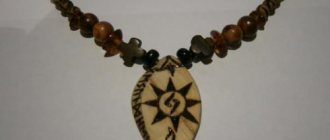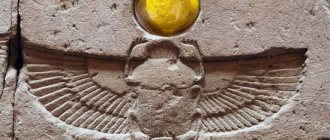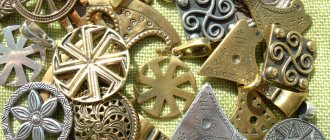Is red thread sold in church?
This amulet appears in the mythology of many peoples and is an element of ethnic beliefs. Priests position the decoration on the wrist as a talisman for ministers of Kabbalistic teachings. This branch of Judaism is esoteric in nature with mystical components.
Kabbalists believe that a red totem on the hand saves from the evil eye, damage; the thread forms a barrier that prevents harm to a person.
In Christianity, prayer is endowed with the functions of amulet and protection from evil intent. The clergy question the woolen headbands and deny their power. The amulet on the wrist has nothing to do with the Christian faith and should not be sold in the temple. It is not advisable to visit a church that sells these decorations.
Orthodox souvenirs from Greece
11 new words whose meaning will be useful to you in other countries
When going on a pilgrimage to the holy places of Greece or going to Athos or Great Meteora on a tourist excursion, many try to buy an Easter set. You can also buy a wrist bracelet from Greece or a rosary. Pectoral or pectoral crosses and various medallions are popular.
Note! In a special place are icons from Greece, especially those depicting the Virgin Mary.
What does a red knotted thread mean in Christianity?
The Church opposes the use of wrist bands. Believers should not wear an amulet for the following reasons:
- wearing, believing that a red attribute will help against the evil eye or demonic influence means adhering to pagan ideas;
- The thread on the wrist in Orthodoxy is a foreign element that personifies magic and Kabbalah. This is contrary to the basic canons of the Christian Church;
- Orthodoxy does not separate white and black magic: all energy comes from the evil one;
- Wrist bands made of wool in Christianity can be perceived as supporting sectarian movements.
Protection from evil and demonic things can be found in God's word. A person approaches the Almighty through prayer. In Orthodoxy, the red thread on the wrist is condemned by the ministers of the temple. The cross and the Bible are a talisman for believers. Other talismans cannot come from the Lord. They are opposed to Holy Scripture.
Rules for wearing amulets rings
The energetically strong and powerful words “Save and Preserve” have incredible power; they can strengthen the Orthodox faith in God, cleanse the soul of bad thoughts, and heal mental pain. The main purpose of these words is to appeal to the saints and God himself with a request for help, salvation, and protection. The amulet ring can be considered a kind of guide in the life of every person, capable of preventing the occurrence of harmful thoughts in time.
Any church amulet is valid only if the owner of such jewelry, without evil thoughts, sincerely believes in the Almighty. There are several rules on how to properly wear the “Save and Preserve” amulet ring:
- Before you put the ring on your hand, it must be blessed in the church;
- In order for the decoration to have the necessary energy, it is best to purchase it in the icon shop of the temple;
- If you want your amulet ring to radiate positive energy, then silver will be the most suitable precious metal for it;
- Under no circumstances should you use a mixture of metal alloys; this can lead to mental disharmony.
If the owner of the “Save and Preserve” ring wants the divine power to always be nearby, to protect and preserve, then it must be worn almost without taking it off. It is not recommended to remove the ring in crowded places, public baths and other places where the jewelry may get lost. If the amulet ring is lost, this will mean that the person has lost not only the decoration, but also the relationship with God.
Can Christians wear red thread?
The Kabbalah amulet, which is worn on the wrist, belongs to anti-religious attributes. The symbol received an ambiguous attitude from the priests due to its mystical interpretation and relationship to Kabbalah. This teaching contains concepts that are prohibited by the Old Testament. Magic, occultism, astrology are prohibited in Christianity.
The answer to the question whether Orthodox Christians can wear a red thread was voiced by the priests. In the text of the Old Testament there is not a single mention of the fact that a red item on the wrist exists and is associated with Jerusalem, the Bible, or Christianity.
Priests strongly discourage Orthodox Christians from wearing red thread from Israel.
The symbolic bracelet is not associated with the Holy Lands. This misconception was spread by supporters of Kabbalistic teachings. Traders have turned this element on the wrist into a trend; it has become popular among all age categories.
Tips and recommendations from experienced tourists and pilgrims
When setting out on a journey to Athos, where you can buy real komboskinis, you should remember that this is a religious building where services are held and monks live. There are a number of prohibitions on the territory of monasteries:
- you can't smoke here;
- it is forbidden to enter the cells where monks live;
- noisy conversations should be avoided;
- you cannot swim in the sea or fish;
- Photography is prohibited.
Note! If absolutely necessary, you can ask permission from the abbot of the monastery to take photographs. If there is good reason, it will be received.
Broyanitsa Guardian Angel
Experienced pilgrims warn inexperienced Orthodox Christians and non-Christians against chasing magical things. Yes, with the appropriate spiritual mood, the bracelet will help you properly set up your spiritual life, which will invariably bring happiness and good luck. But you cannot treat the combo skini as an occult talisman that can help without spiritual work on yourself.
Here is a story about komboskini from Greece, the meaning of which is to help a person in spiritual struggle. This bracelet, each knot of which is imbued with the monks’ love for their neighbor, can be bought for yourself or given to a loved one. But in any case, the main thing is the right mood of the person, only in this case the “amulet” will help.
Why priests do not advise wearing a talisman
Christians believe that tying a red thread on the wrist is a pagan, demonic rite. People engage in demonic activities without knowing it.
Priests recommend following all the canons of the Orthodox religion, honoring your faith, without adopting the traditions of foreign branches. In their opinion, Hindu temples and the tradition of wearing a thread as a talisman are not connected with the concepts of Christian faith.
Factors that deter you from using a red woolen amulet on your wrist:
- Unholy rituals will not be beneficial. They are destructive to the soul and body of the believer. The source of energy from which people are trying to get strength is material. Worship and belief in the power of an inanimate object is prohibited in the Christian tradition. Belief in the magical abilities of the thread is a demonic ritual. This is considered unacceptable for an Orthodox person. If you wear inappropriate red paraphernalia on your wrist every day, you can unconsciously make a pact with the devil and renounce the Lord.
- By turning to the devil, a person betrays his faith. It is impossible to simultaneously receive spiritual protection from the Lord and from the forces of the thread.
- Pagan elements are part of modern society. Many spiritually enlightened Christians wear ritual items in red on their wrists, unconsciously succumbing to their influence. Superstitions are ingrained in thinking, they are found everywhere - black cats, broken mirrors, spilled salt. You shouldn’t follow your own prejudices or fashion trends: buy a red fashionable thread and believe in its magical power when worn on your wrist.
Do you need the help of magical powers?
Get an answer to your burning question from a magician and healer. Write about the problem right now, and an expert will suggest a solution online!
Ask a free question View all questions
The main problem is the fact that a Christian voluntarily enters into a spiritual relationship with evil forces. Valuable concepts that a believer has:
- the grace of God;
- the power of faith;
- peace in the soul;
- high regard for spiritual nature.
Totems and talismans break the knot connecting believers and God. People buy a red thread and wear it on their wrist as a decoration, without realizing its meaning or belief in magical powers. Modern man cannot take prohibitions on amulets and amulets seriously. The teachings of Kabbalah and the reasoning of representatives of the Christian clergy are a little exaggerated.
A person’s attitude towards ritual is important. If a Christian gives the red magical thread a special meaning with a negative connotation, we can talk about a problem with the state of mind.
How to wear things with church symbols correctly?
Every Orthodox Christian, as a sign that he remembers the torment of the Lord on the cross, must wear a pectoral cross from the moment of baptism until death. In addition, they often wear rings with prayer inscriptions, bracelets with images, amulet, consecrated belts and other things with church symbols. However, not everyone understands what this or that symbol means and how to wear it correctly.
Wear the cross with the crucifix facing up
The most important personal item for a Christian is undoubtedly the pectoral cross. The most common form of the Orthodox cross is eight-pointed; the prayer “Save and Preserve” is most often written on the reverse side. Pectoral crosses can be made of any metal or wood. You can wear them on anything: on a chain, leather cord, harsh thread. The main requirement is that the cross must be consecrated in the church. At the same time, the priest reads two special prayers. They contain a request to the Lord God that He pour heavenly power into the cross and that this cross protect its owner.
After baptism, the cross is worn around the neck under clothing. Only priests wear it over their clothes. But the laity are allowed to wear decorative crosses over their clothes as regular jewelry.
The pectoral cross should be treated with special reverence. For example, church regulations oblige him to kiss him after every evening prayer.
Which finger should I put the ring on?
Currently, it is customary to wear rings with prayer inscriptions, most often “Save and preserve.” The first rings with the inscription “Save and Preserve” appeared in monasteries and were offered to pilgrims as a souvenir and amulet. Now they are sold in many church shops and jewelry stores.
In order for a piece of holy power hidden in the products to become a real symbol of faith and veneration of the Almighty, the ring must be consecrated after purchase. It must be worn on the thumb, index or middle finger of the right hand. It is with these fingers that Orthodox Christians cross themselves. If the owner of such a ring is married, then you can put it on the ring finger and wear it along with the wedding ring.
People believe that silver rings with prayer inscriptions have the greatest power. This metal cleanses and protects from evil spirits, as well as evil, envious people.
The belt will save you from problems and illnesses
Often Orthodox Christians wear the belt of the Blessed Virgin Mary on their bodies. The history of the shrine is as follows. The Mother of God personally wove a belt from camel hair, which she wore until the end of Her earthly life. Now this relic is kept in the Athos Monastery. So that everyone can borrow a piece of holiness from her, the monks make belts, attach them to the belt of the Virgin Mary, and then sell them to parishioners.
The belt of the Virgin Mary can be worn around the waist, arm or head. It is not necessary to wear it all the time, but when solving important life problems, as well as during illness, it is simply necessary to wear it - over or under clothes.
If the item gets dirty, it doesn’t matter, it can be washed. It is better to do this without detergents, and do not pour the water down the drain after washing. It is useful to water indoor plants with it.
The bracelet can be worn on any hand
Bracelets with icons appeared relatively recently - 10-20 years ago, but quickly gained popularity among believers. The Church has an ambivalent attitude towards them. Some priests believe that such bracelets are stamped with distorted portraits of Saints, so wearing them is sacrilege.
Others believe that wearing such a bracelet is a godly deed, because believers, with the help of this thing, try to once again remind themselves of the endless goodness of God. At the same time, it does not matter at all on which hand to wear it and in which direction the faces of the saints are turned. The main thing is that the bracelet with icons is consecrated in the church.
The incense must be compiled personally
The Church allows believers to wear small particles of various shrines on their bodies in order to constantly be close to God’s grace that is contained in them. These can be particles of the relics of saints, fragments of their clothing, earth and pebbles from their burial places, consecrated church incense, an icon, a bottle of holy water, etc. They are placed in a special bag or box and must be blessed in the church. The amulet is worn around the neck or belt.
People believe that the contents of the amulet should be compiled by the Christian himself from holy things dear to his heart or received from close relatives. And if the incense is made in a store, it will not have those sacred qualities that are especially close to the parishioner.
In what cases is wearing a red thread appropriate?
The attitude of a Christian towards a ritual amulet on his wrist is important. If for him the product does not carry symbolism of the fight against the forces of evil, demonic manifestations, one cannot talk about his spiritual fall, renunciation of God's commandments.
If you move away from the orthodox canons of the Orthodox Church, the ban on wearing threads on your wrist can be lifted. There are options when wearing a red totem is allowed:
- as an ordinary decoration, without endowing it with magical qualities. Often pendants in the shape of a dove, an eye, or a palm are attached to the product;
- as a method of psychological correction, protection from internal destruction, psychological imbalance (for a short period). Christianity does not support this method, but does not prohibit wearing jewelry on the wrist.
You can wear red amulets if you endow the thread not with esoteric meaning, but with psychological attitudes. At moments when a person feels vulnerable, during active cooperation with a psychologist or psychotherapist, you can look at your wrist and reinforce your internal resources. The clergy recommend Christian methods: regular communion, attending church, traveling to the Holy Land of Israel, wearing a cross.
Icons from Greece
14 Amazing Japanese Yakuza Mafia Tattoos and Their Hidden Meanings
Among the images of Greek shrines, the “Prince Silvero” series is especially popular. These are special Greek saints icons painted in silkscreen style. Silver and gold leaf are used for decoration, and the frames are made of very high quality wood and coated with a triple layer of varnish. The result is very beautiful icons. Each of them has a quality certificate.
Prince Silver icon
Where to buy
Initially, church paraphernalia was sold only in monasteries, churches, and church shops. But with the advent of jewelry stores, church bracelets and other religious jewelry are increasingly being bought there. This is especially true for products made of gold, silver and precious stones. However, all of them remain only decorations if they are not consecrated in the temple. Therefore, it is better to buy a church bracelet and other similar items on the territory of holy places. In churches, all Orthodox paraphernalia goes through the consecration stage and only then goes on sale. It is believed that only a consecrated church bracelet or other decoration helps a person find peace of mind, clears the mind, and protects against trials.











